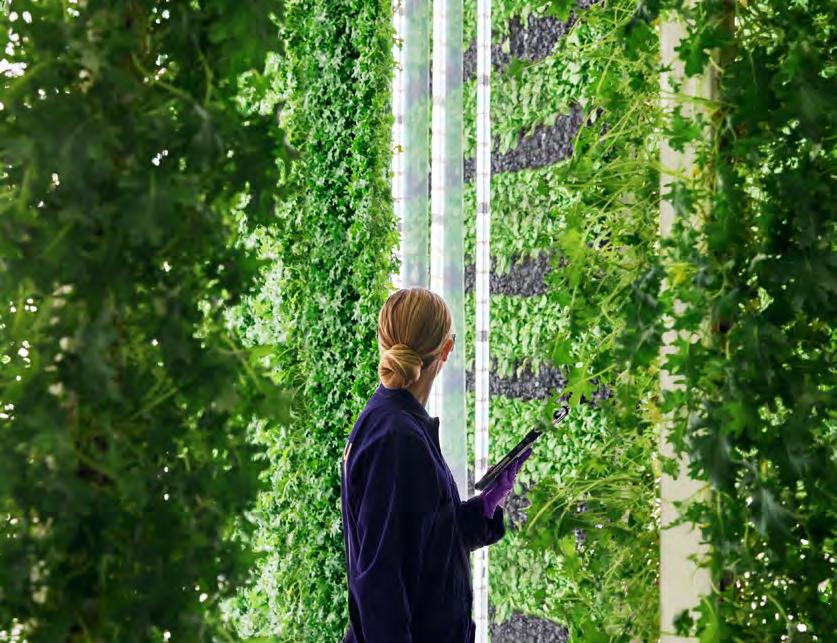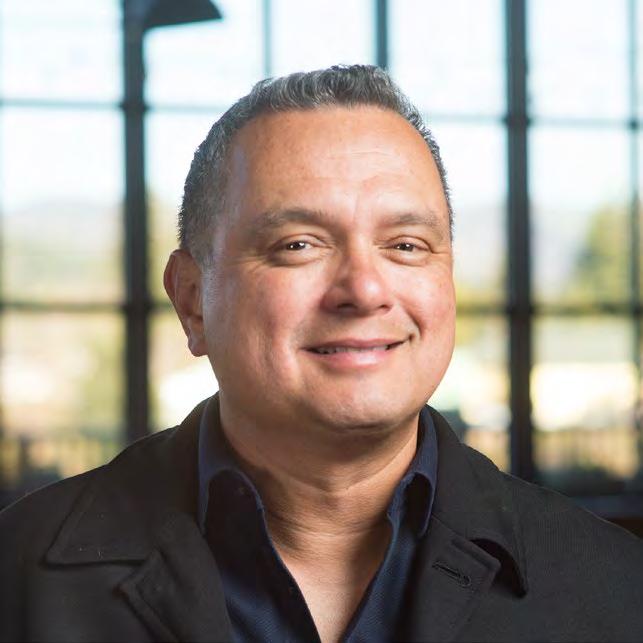
4 minute read
GLOBAL FOOD LEADERS
from Segment magazine 4
Segment chatted to Arama Kukutai (Ngāti Tipa, Maniapoto, Te Aupōuri) about the future of agritech in Aotearoa and beyond. Kukutai has been an agribusiness entrepreneur for two decades and is a thought leader in agrifood sustainability and investment trends. He is CEO of Plenty and Co-founder of pioneering agritech venture fund Finistere Ventures. He was previously Executive Chairman of PKW Farms and led New Zealand Trade & Enterprise (NZTE) in North America.
How did growing up in the Waikato region shape your view of the world and influence your career development?
Advertisement
My whakapapa is to the Waikato, Taranaki and the Far North, but our home marae is the Tūrangawaewae, in the Waikato. My grandmother used to run the pā garden, and I have memories of digging up the lupins, which were used as an organic fertiliser. Our whanau has close links in farming, and worked to build a resilient food supply while being guardians of the land. This has always stuck with me and is what inspired me to expand my focus beyond a single farm to technology that can benefit lots of farms. The work we do at Finistere Ventures, for example, looks at how we can use technology to feed the world sustainably.
As a Co-founder of Finistere Ventures, you’ve seen many innovations in agritech. How do you think technology could shape the future of the horticulture industry in Aotearoa New Zealand?
efficient indoor growing — you won’t have to use a lot of energy keeping the temperature static as you do in climates with extreme heat or cold — and removing reliance on the sun and the weather could dramatically speed up both food production and the breeding of new plant varieties. Aotearoa’s biggest challenge is staying connected to the outside world and accessing the best of others’ technologies. There’s a limit to how much innovation is possible with a small population and an opportunity to accelerate the evolution of New Zealand’s food production by leveraging technology and partners from around the world.
What are some of the agritech innovations you’re most excited about right now?
An interview with Arama Kukutai, Plenty
Horticulture is a really specialised area of agriculture. In Aotearoa, it tends to be focused on a specific crop for a specific piece of land, whether that’s kiwifruit in the Bay of Plenty or wine grapes in Marlborough. However, the amount of land we can farm is finite, so if we want to get more from that resource we have to think differently. For example, at Plenty, we can get 300 hectares worth of produce from one hectare of land by growing vertically and indoors. We can also get harvests year-round. Aotearoa has a good environment for more energy-
I think moving some of our food production indoors is going to be huge — what I call the “hybrid agriconomy”. At the moment, less than 1% of food is grown indoors. By investing in and growing those capabilities, we will see a real shift in food production over the next 30 years. In addition to indoor or vertical growing, I think we’ll see our sources of food expand through more cultivated, or lab-grown, meat and precision fermentation. For outside production, there will be a continuing digitisation of agriculture, so farmers can get a better understanding of what’s happening on their farm. Not having time to enjoy life is one of the biggest reasons I hear for people getting out of farming, so getting more time back through use of technology is a compelling incentive.
As CEO of Plenty, indoor growing is obviously top-of-mind a great deal of the time. What are some of the hurdles for the growth of this technology?
Any innovation is capital intensive, and getting new technology off the ground can be really hard. Indoor agriculture is a new asset class that a lot of mainstream investors, like banks, haven’t come across before so they don’t have the confidence to hand out large capital investment. With Plenty, we’re answering questions about how we can make indoor growing economical, and demonstrating the sustainability credentials of our farms and our technology. Hopefully that will make it easier for others to gain the investment needed to scale.
You’ve talked before about the need for new Plenty operations to integrate with the local community. Why is this important to you?
Food is integral to people’s lives. We really take pride in doing something that can have a positive impact on both people and the planet. Building a farm is a long-term commitment to a place, so being part of the community is important. Our first farm is in Compton, a small city in Los Angeles, which is well known in large part because of the talented people who come from there, such as Serena and Venus Williams, Kendrick Lamar and Dr Dre. The opportunity to hire locally and be a supportive and engaged part of the community was a big part of what made Compton such an attractive location for our first commercial farm. Our next farm is going to be in Virginia, on the other side of the USA, which is a very different place with its own opportunities and challenges. The plan is for each of our farms to earn the right to be relevant to the community it’s based in, having its own identity within the values we have as a company.
You are launching an internship for Māori STEM and business graduates to engage with a global network. How is that progressing?

The internships are an exciting project, and a way for me to build on the great opportunities I’ve had. Te Ara Pōtiki, which we’re in the process of launching, will help Māori rangitahi (young people) explore and build connections outside of home. The Māori economy is estimated at $70 billion, but arguably our biggest resource is our people. Through this internship we’ll provide young scientists and commercial leaders with opportunities in technology companies to help them build their careers and their networks. We’re expecting the first cohort of interns in the USA during the New Zealand summer, essentially the “off season” for interns in the northern hemisphere, and we’re offering three experience tracks — engineering/software, science disciplines and entrepreneurial — which are all vital in building food production for the future.
How does food feature in your home life?
With a young family, it’s really interesting to watch what my kids eat as they grow. In my day, you ate what you were given, but kids these days have so much more choice. My daughter, who’s 12, is eating less meat, and really embracing meat alternatives. I think we’re all getting more used to focusing on the fresh produce outside of the grocery store, as the packaged goods, like cans and paper towels, found in the middle are easy to buy online. Like most families, we’re busy, so we’re looking for food that’s convenient. The key is balancing what’s good for us with less fuss, which is what’s great about Plenty produce. It’s pesticide-free, so you don’t have to wash it — you can literally just open the pack and eat.








